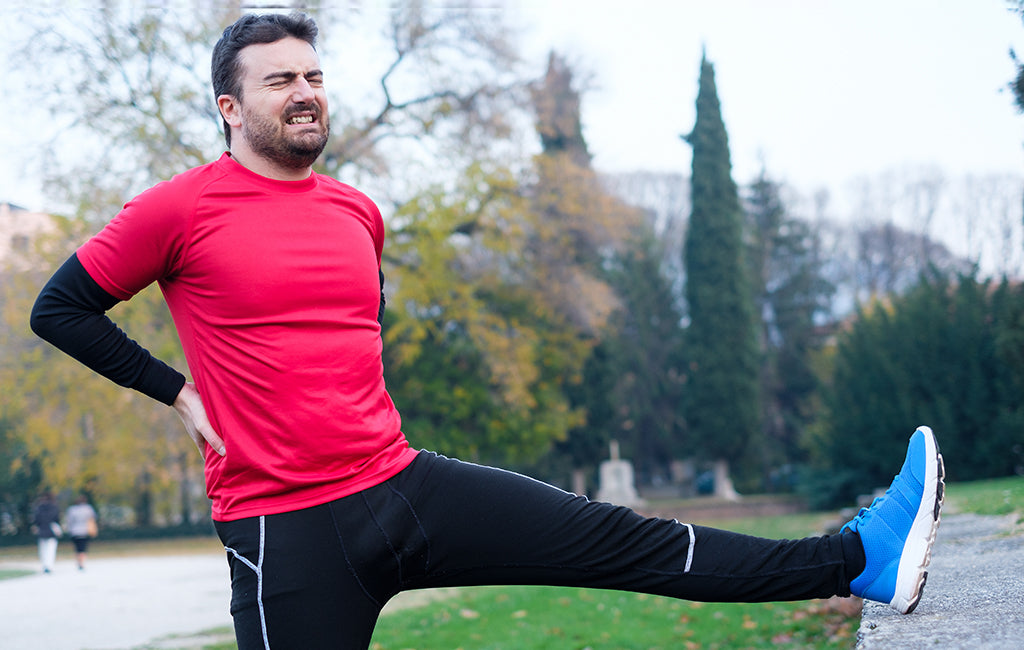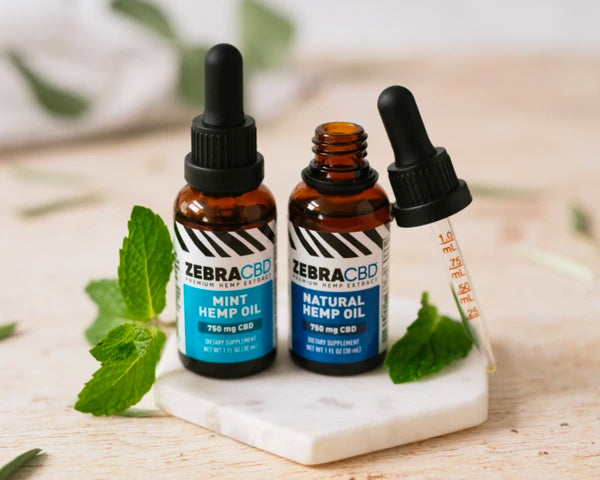
It’s likely happened to every runner, whether you’re a hardcore marathoner or a casual jogger — you come home after a long run, your muscles are tired and achy and your lower back soreness seems to radiate throughout your body.
While most aches usually resolve after some rest and recovery, lingering lower back injuries can be a major frustration for runners and may even hinder your day-to-day responsibilities.
Don’t let your back pain from running take you out of commission — read on for strategies to help you soothe your spine.
What Causes Lower Back Discomfort?
One of the most important things to keep in mind when dealing with lower back discomfort is that you’re not alone.
Georgetown University’s Health Policy Institute reports that 16 million Americans suffer from back issues — with an additional 65 million Americans reporting at least one incidence of back discomfort.
It can have serious impacts on the lives of those who experience it –— it’s the root of around 83 million sick days a year.
Back strain can be caused by any number of things — sleeping position, manual labor or heavy lifting. Even just one awkward movement can send your spine into uncomfortable spasms. Additionally, activities that put the body under stress like strenuous exercise can often trigger episodes of back soreness.
What Kinds of Back Aches Are Linked to Running?
Is your lower back sore after running? Anything can trigger an episode of agony in your back, but high-intensity physical activities like running are often the culprit. Osteopath Gavin Burt summarized four of the most common back irritations linked to running in Runner’s World:
- Cramping – Lower back spasms that occur when weakened muscles cramp up into tangled knots
- Joint dysfunction – Irritation in the two joints at the base of the spine that can be caused by an unbalanced running stride
- Joint irritation – Burning in the joints of the vertebrae, often made worse when partnered with weak core muscles
- Back weakness – Low muscle tone in the back or in the abdomen, which leads to excessive stress on the body when running, resulting in muscle strains and aches
It’s critical to know your body’s unique limits — pushing yourself too hard can cause these problems to flare up or make existing issues worse and put you at risk for an injury.
Whether you’re trying to build an exercise routine after years of being sedentary or testing your endurance as you train for a marathon, taking time to listen to your body both pre- and post-run is just as important as the run itself.
All the precautions in the world can’t always save you from the dreaded post-run achy back. Before the next time you’re faced with lower back pain after running, make sure you have a toolkit full of strategies to soothe your strain and prevent future injuries.
#1 Stretch It Out
It might sound counterintuitive to recommend exercise for your sore muscles. After all, wasn’t it exercise that got you into this situation in the first place?
However, building strength and stability throughout your body is one of the best ways to prevent injury. Without a strong core, runners can often find themselves left with aches concentrated in their lower back.
Make sure to supplement your cardio with strength-building workouts to keep your body balanced and in tune with itself. Gentle, low-impact exercises like swimming, yoga, walking, Pilates or cycling are great ways to keep your body in motion as you take time for active recovery.
There’s also a number of stretches that can help relieve achy back strains. Healthline recommends some of the following to stretch and soothe cramped muscles:
- Single-leg stretch – Lay flat on your back with one leg raised and hands grasping the thigh in a reclining single-leg stretch. Hug the knee to the chest and alternate legs to ensure a full-body stretch.
- Pelvic tilt – Plant both feet firmly on the ground while remaining on your back for pelvic tilts, similar to bridge pose in yoga, to strengthen core muscles.
- Windshield wiper – Lay with knees bent up toward the chest and your back against the floor, shifting your hips from left to right for windshield wipers that help to open your hips and align the sacral muscles of your spine.
- Yoga poses – Move through classic yoga poses like cat/cow, where you arch and then drop your spine while on all fours; child’s pose, which takes you to a resting position with arms outstretched; or unwind and let your muscles relax as you focus on your breathing in corpse pose.
Make your post-run stretch a habit to ensure that you're taking care of major leg muscle groups such as your glutes, quads, hamstring muscles and calves. When you experience leg muscle strain, you need time to relax and recover. Consider adding in supplementary practices like foam rolling or acupressure/acupuncture to help your muscles loosen and ease further.
Building in opportunities for strength building, gentle motion and targeted stretches can help you avoid serious issues like running injuries further down the road.
#2 Keep Your Cool
Once the throbbing ache in your lower back flares up, you’ll be desperate for anything that might help to soothe it. One trick is already hiding inside your freezer — ice.
Icing a Sore Back
The intense discomfort associated with a sore lower back is often caused by swelling. After a taxing activity like running, your muscles need time to repair themselves. Swelling is part of that repair process — your body sends fluids to the strained area to help heal muscle fibers, which can cause soreness and tenderness at the site.
Whether it’s a specialized ice pack wrap for your back or just a bag of frozen peas, ice helps alleviate feelings of soreness by forcing your blood vessels to constrict, cutting down on swelling and tamping the flow of irritating fluids to the area.
It’s recommended that ice be used straight away to head off any worsening soreness — swelling is at its worst in the 48 to 72 hours immediately after an incident.
Turning Up the Heat
After the initial swelling has subsided, switching to heat can help relieve irritation further. Heat can aid your body’s circulatory system, allowing healing nutrients to cycle through your body and speed up your recovery time.
Anything from using an electric heating pad to soaking in a hot bath can help soothe tight, achy muscles and bolster your body’s ability to heal itself.
#3 Fuel Up
Your body needs the proper building blocks to ensure healthy rest and recovery post-run and avoid any long-term aches and strains. It’s suggested that eating an anti-inflammatory diet paired with plenty of sleep and movement can help you avoid irritating swelling and the lingering lower back woes that can follow.
What Foods Are Anti-Inflammatory?
Plant-based diets rich in anti-inflammatory compounds like omega-3s, fiber, calcium and vitamin D play a major role in keeping your body misery-free and mobile. Some examples of foods that can help fight swelling include:
- Whole grains – Whole-wheat bread or pasta, brown rice, oatmeal, bulgur or quinoa
- Colorful fruits and veggies – Everything from dark leafy greens full of calcium and vitamin K like kale or collard greens to antioxidant-loaded fruits like pomegranates, blueberries and cherries
- Coldwater fish – Salmon, tuna, black cod, herring and trout are rich in omega-3s, which may reduce muscle soreness
- Soreness-fighting spices – Turmeric, ginger, cayenne and cinnamon
Which Foods Should You Steer Clear Of?
Foods to avoid because of their swell-spiking properties include highly processed foods or foods rich in saturated fats or partially hydrogenated oils, such as:
- Enriched grains like white bread, white pasta and white rice
- High sugar options like sodas and sweets
- Refined vegetable oils
#4 Seek Relief With CBD
CBD can be a great supplement to your running recovery routine. CBD products may be able to help relieve sensations of physical discomfort in your lower back after running.
When applied or ingested, CBD interacts with the body’s endocannabinoid system, which is responsible for maintaining homeostasis. To that end, CBD can help to soothe your muscles and promote relaxation and recovery.
By implementing a CBD oil, gummy or topical lotion into your routine, you can start feeling like your best self again so that you can lace your sneakers up and get back out on the trails.
If you are experiencing discomfort with other muscles, learn more about what to do with a sore achilles from running and sore hamstrings from running.
CBD During Your Run
For targeted, on-the-go relief from sore back muscles, consider trying a product like Zebra CBD’s Roll-On Relief. It has a topical applicator that helps you deliver rapid recovery right where you need it most and a soothing blend of peppermint, eucalyptus, lavender and almond essential oils to promote a feeling of calm. You’ll want to keep this soothing solution by your side for all of your runs.
CBD After Your Run
Waking up the morning after a long run with a sore lower back and aching muscles? Zebra CBD’s Joint and Muscle CBD Tablets can help to alleviate joint discomfort, boost flexibility and get you ready to run again.
This powerful blend of premium CBD oil and natural botanic ingredients like Boswellia, turmeric, vitamin D and ginger root can ease your feelings of joint and muscle discomfort and keep your body limber and free of running-related aches and cramps.
Zebra CBD: Premium CBD for Health & Vitality
Running is one of the best ways to keep up with a healthy and active lifestyle — which is why it should be paired with a premium approach to muscle recovery to soothe any running-related discomfort: CBD.
At Zebra CBD, we take our recovery seriously. As your trusted CBD vendor, we’re proud to offer products made with natural ingredients, from seed to bottle, that can provide targeted relief and ease joint and muscle discomfort after your run.
Don’t wait until the next time you’re dealing with feelings of lower back discomfort — face it head-on today with Zebra CBD.
Source:
Healthline. 9 Stretches to Help Relieve a Tight Lower Back. https://www.healthline.com/health/lower-back-pain-relief
Verywell Health. Is it Better to Ice or Heat a Back Injury? https://www.verywellhealth.com/back-injury-heat-or-ice-296942









